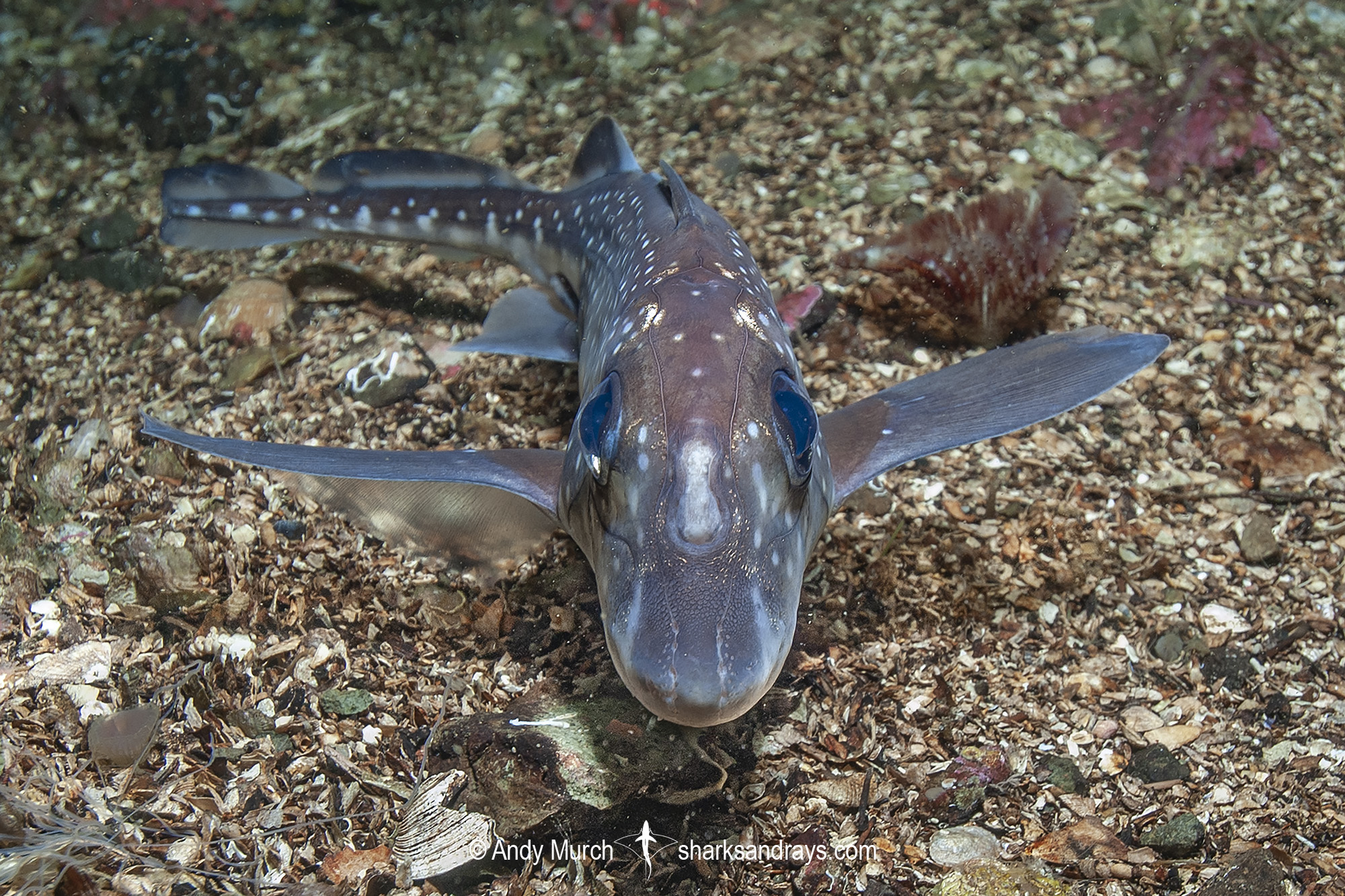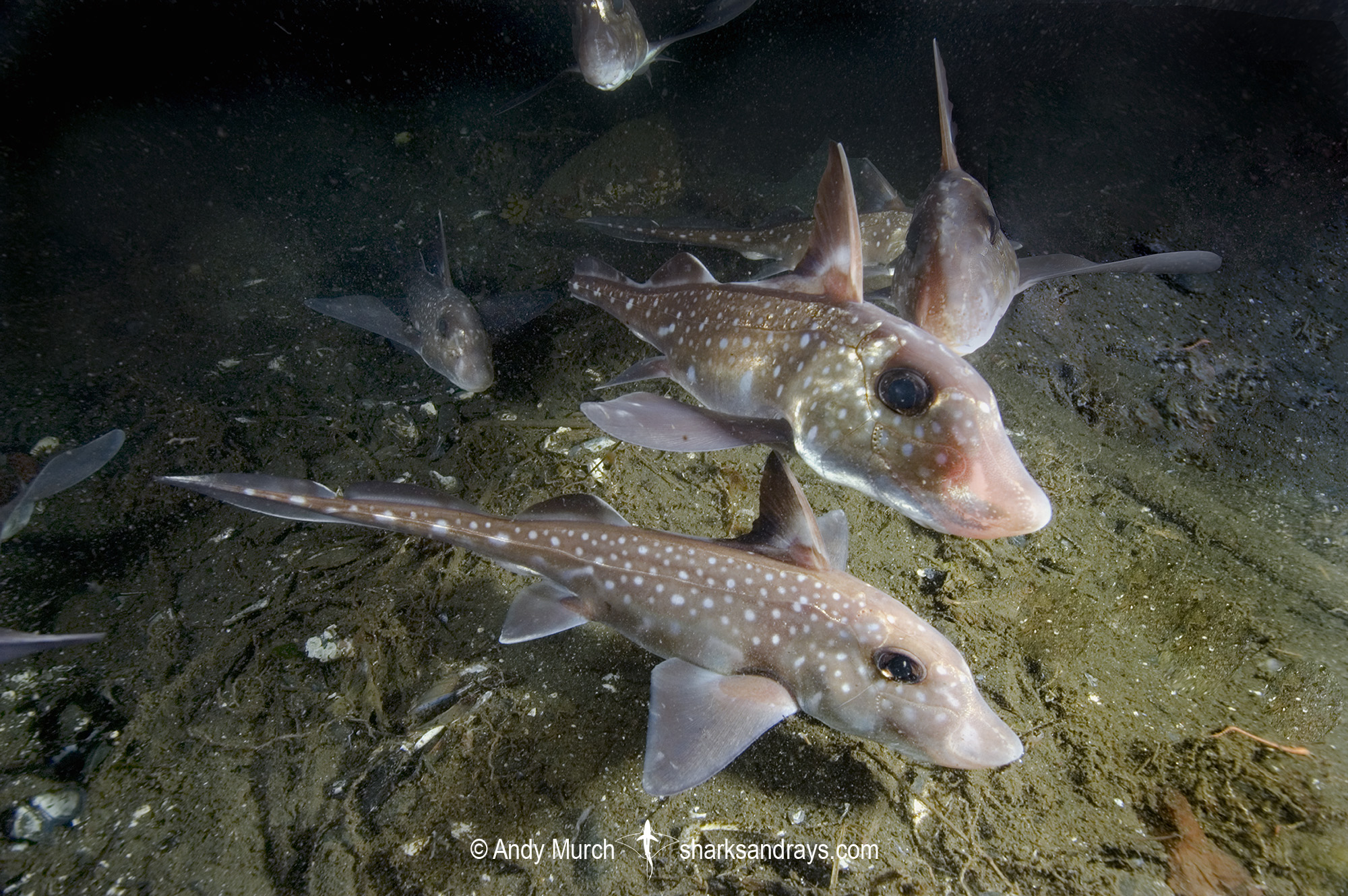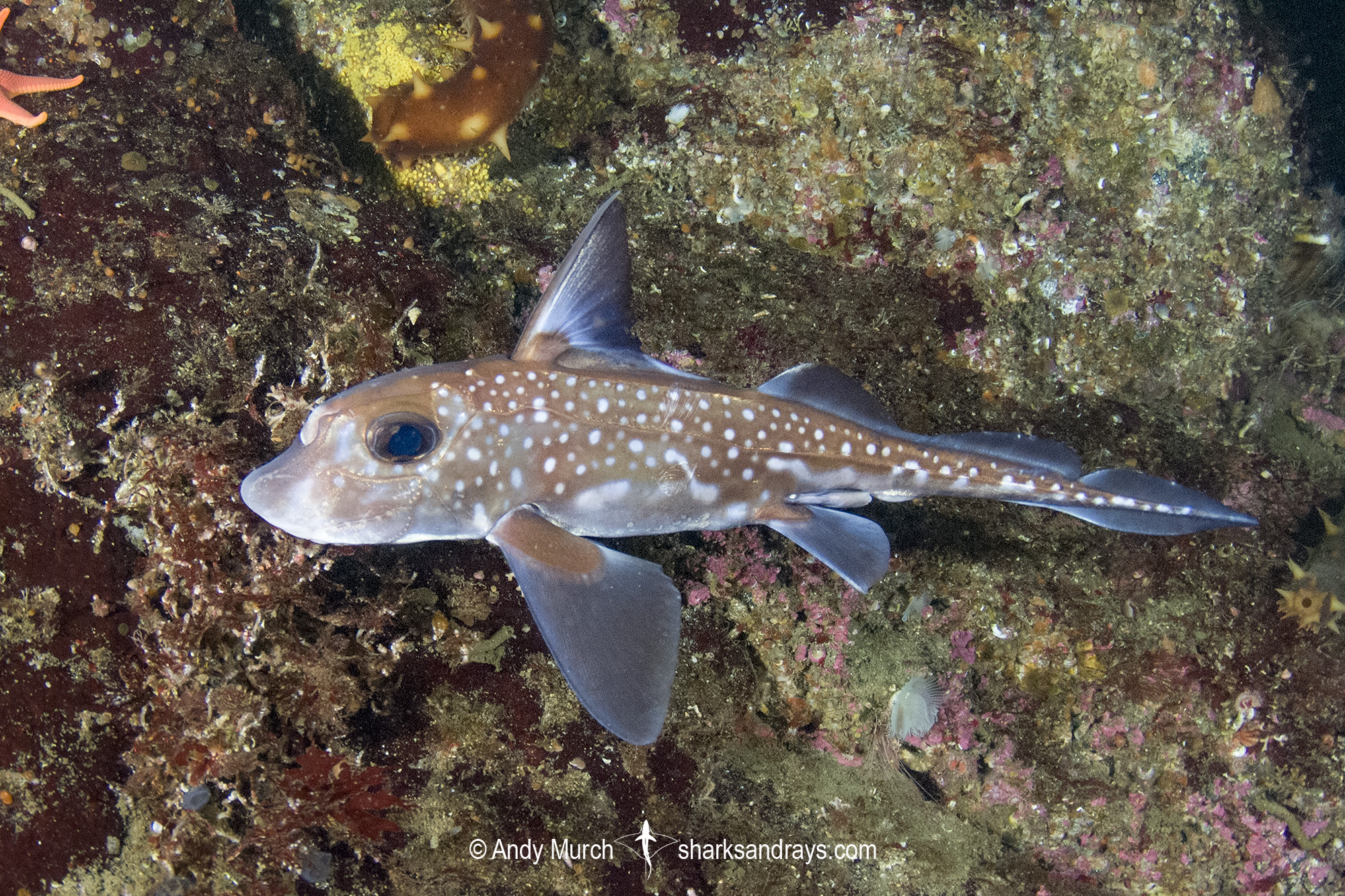Common name(s)
Spotted Ratfish.
Identification
A medium-sized chimaera with a large bulbous head and a tapering body. Snout broadly rounded. Frontal tentaculum (cephalic clasper) present on forehead of males. Eyes very large. mouth wide. Nostrils small, round, and close set.
Pectoral fins large, triangular, with narrowly rounded apices. Pectoral fin base short, muscular and mobile, supporting membranous, translucent fins that are used for locomotion. Pelvic fins smaller and more shark-like. First dorsal fin tall and triangular, with prominent rays, and a formidable, venomous anterior fin spine that can be raised perpendicularly to deter predators, or lowered when swimming. Second dorsal fin low and very long, split into 2 rounded sections joined by a very low ridge. Anal fin absent. Caudal fins low, long, and tapering. Caudal fin terminates in a thin filament, when intact.
Colour
Orange-brown dorsally with numerous small white spots. Fins translucent bluish grey, sometimes fading to black. Ventrum white.
Size
Maximum length of females 97cm; males attain much smaller sizes. Size at birth ~14cm.
Habitat
Temperate seas. Found on sand, mud, rocky reefs, and in kelp forests. Often on the bottom but also seen in midwater and rarely at the surface. Intertidal to 913m. Apparently abundant in deeper water but also common in shallow water in the northern part of its range.
Distribution
Northeastern Pacific. Found from southern Alaska to Baja and the Sea of Cortez but most common off the coast of British Columbia, Canada and Puget Sound, Washington.
Also recorded off of the Pacific coast of Costa Rica.
Conservation Status
LEAST CONCERN
Spotted Ratfish (Hydrolagus colliei) is not targeted by fisheries, but it is taken as bycatch in commercial trawl and longline fisheries and rarely retained. Fisheries-independent surveys of Spotted Ratfish along the west coast of the United States suggest that this species is stable or increasing throughout this area. Given the broad distribution of this species, generally high abundance, recent increases in population size, and evidence to suggest that the population can recover from substantial bycatch, this species is assessed as Least Concern.
Citation
Barnett, L.A.K., Ebert, D.A. & Dagit, D.D. 2015. Hydrolagus colliei. The IUCN Red List of Threatened Species 2015: e.T60191A80678052. https://dx.doi.org/10.2305/IUCN.UK.2015-4.RLTS.T60191A80678052.en. Downloaded on 07 June 2021.
Reproduction
Oviparous. Paired egg cases are deposited every 17-19 days during the reproductive season; late spring to fall.
Egg cases are long, thin, and tapered at one end with a feather-like fringe running along most of its length.
Diet
The spotted ratfish feeds heavily on crabs and clams, but also consumes shrimp, worms, small fish, other small crustaceans, and even sea stars.
Behavior
Swims slowly over the substrate locating food by smell. Populations undergo vertical and lateral migrations. Spotted ratfish form aggregations segregated by size and sex.
Reaction to divers
Somewhat easy to approach. Generally swims slowly away but sometimes possible to approach slowly when concentrating on feeding.
Diving logistics
Spotted ratfish are fairly easy to locate over silty substrates at night, and on rocky reefs during the day in certain areas.
Around Victoria, ratfish can be found at night feeding on the flats adjacent to Ogden Point Breakwater. Bring a compass and beware of potentially strong currents if shore diving.
Spotted ratfish appear to be common around Tahsis Inlet on the west coast of Vancouver Island e.g. on shore dives near the jetty. They are also abundant in Browning Passage and can be seen at Browning Wall even during the day.
Puget Sound in Washington State is reputedly another good area to locate this species.
What’s new
View our full list of updates
Similar species
No other chimaeras enter shallow water in the northeastern Pacific.

















